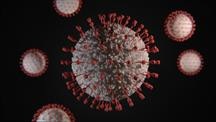Researchers have analyzed previously unseen genomic samples from the early days of the COVID-19 pandemic, providing crucial insight into the outbreak's origins, including the presence of infected animals at the Huanan live animal market in Wuhan, China. This evidence supports the theory that the market was the spillover location of SARS-CoV-2, the virus responsible for COVID-19.
The data, briefly uploaded to a global database by Chinese scientists, reveals the presence of raccoon dogs and other animals susceptible to the coronavirus in the market. These infected animals may have served as a potential source of human infections, shedding new light on the chain of transmission from animals to humans.
According to a pre-print report published by international researchers, including Michael Worobey from the University of Arizona, Kristian Andersen from Scripps Research in California, and Florence Débarre from Sorbonne University in Paris, the data analyzed consists of new sequences of the SARS-CoV-2 virus and additional genomic data based on samples taken from the Wuhan market in 2020. The researchers accessed the data through the GISAID database, where it was initially uploaded by the Chinese Center for Disease Control and Prevention (CDC).
The report adds more detail about the animals present at the market, showing that some of the SARS-CoV-2 positive environmental samples had more animal than human genetic material, consistent with the animals being infected. The World Health Organization (WHO) stated last week that the information was not conclusive but did represent a new lead into the investigation into COVID-19's origins, and should have been shared immediately.
The new research comes as US President Joe Biden signed a bill requiring the release of intelligence materials on potential links between the outbreak and a laboratory in Wuhan. Biden said, "We need to get to the bottom of COVID-19's origins ... including potential links to the Wuhan Institute of Virology," and promised to declassify and share as much information as possible.
The findings support the predominant scientific consensus that the COVID-19 outbreak was most likely zoonotic, jumping from an animal to humans, as has occurred with other similar viruses. However, questions remain unanswered, such as why it has taken so long for the genetic sequences to emerge.
"The data does point even further to a market origin," said Kristian Andersen, who attended the WHO meeting earlier this month and is one of the scientists who has examined the samples. The ongoing investigations and new data releases are unlikely to be the last word in the highly polarized debate over the origins of the outbreak.






